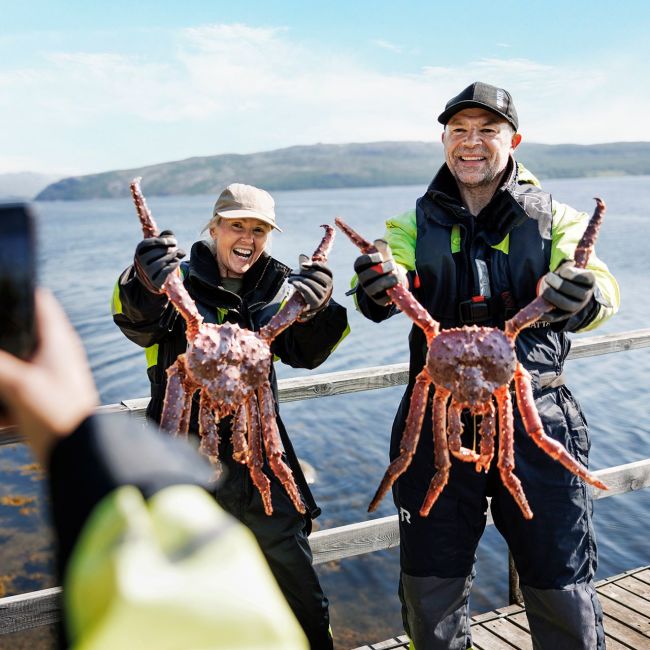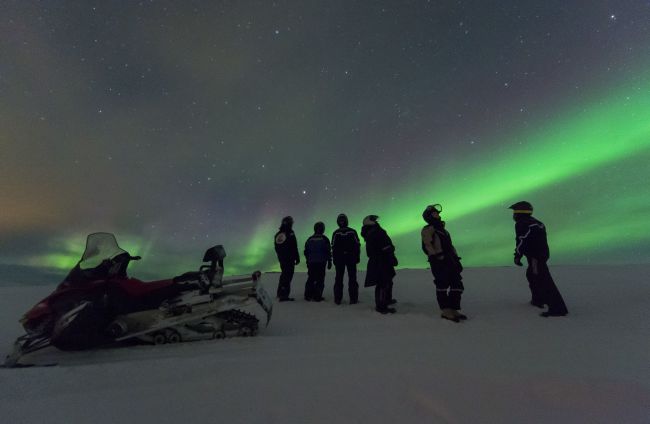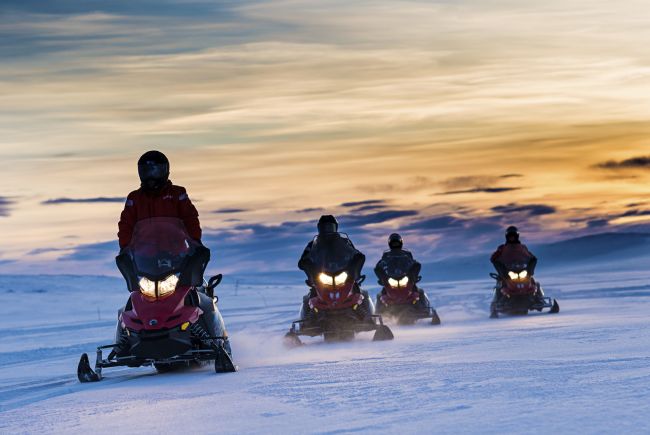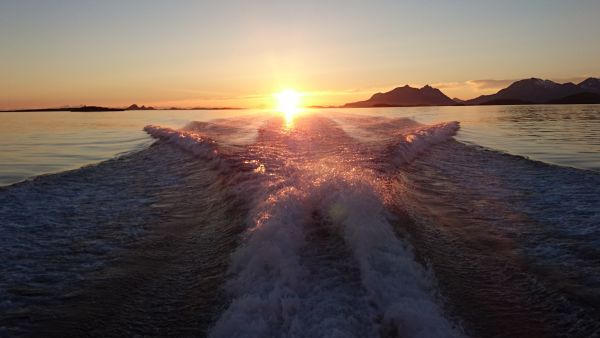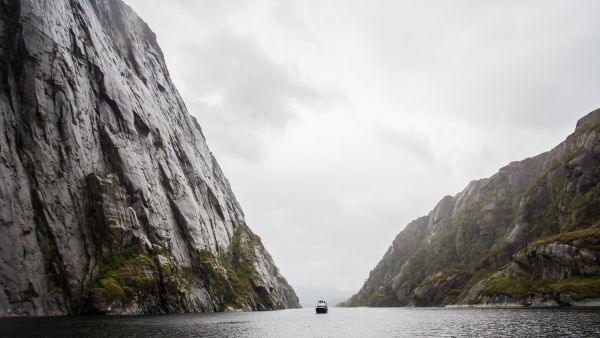The Magical Northern Lights
The Magical Northern Lights
The Northern Lights holds a scientific fascination for some. Others simply surrender to the beauty of the colourful fireworks in the middle of the dark night. While others believe in the mythical explanations, e.g. that they represent the Viking god Odin's female warriors riding wildly across the sky.

Experience the Northern Lights with Havila Voyages
The Northern Lights are collisions between electrically charged particles from the sun that enter the Earth's atmosphere and put on a beautiful celestial dance.
There are few places in the world better for seeing the Northern Lights than northern Norway. The globe has a Northern Lights halo that lies around the top of the planet and stretches like a shimmering band across the winter voyage of Havila Voyages.
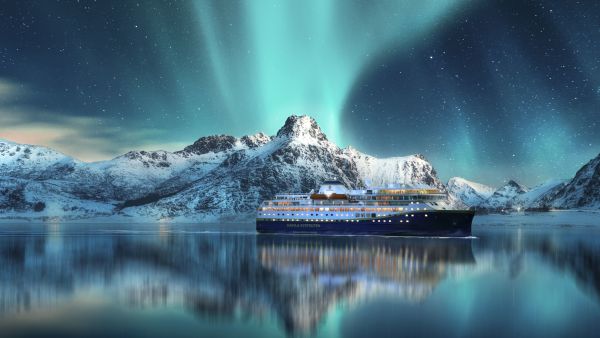
You can see the best and strongest Northern Lights in late autumn and early spring. October, February and March are the best months for seeing the Northern Lights. But in clear weather and darkness, you can experience the Northern Lights on the entire voyage along the coast. Whether you are standing out on the deck and almost able to feel the crackling of the celestial forces, or you are snug and comfortable inside the observation lounge while watching the colourful display through the glass ceiling, this is an experience you will not forget.
What are the Northern Lights?
The Northern Lights start deep within the sun. Hydrogen nuclei fuse and release energy that takes hundreds of thousands of years to get further and further out. The energy leaves the sun as the light we see, but also as particles. This flow of particles is also called solar wind. Some of these particles in the solar wind manage to get into the earth's magnetic field and the earth's atmosphere and collide here with oxygen and nitrogen. These collisions release energy - which we see as the Northern Lights. The magnetic fields around the earth's poles make the Northern Lights occur in the polar regions. Therefore, you can also see the Northern Light's "twin", the Southern Lights, in the area around Antarctica. The composition and density of the atmosphere in addition to the altitude help to determine the colours of the Northern Lights. The strong green light occurs at altitudes of 120–180 kilometres and above. The Northern Lights that are at higher altitudes turn red while the blue and purple ones are usually below 120 kilometres.
Check out our Northern Lights Promise
When do you see the Northern Lights?
To see the Northern Lights, there must be dark, clear skies. In the summer in Norway, the nights are bright, and in the far north the sun does not set below the horizon. The Northern Lights are seen in the winter but most frequently in late autumn and early spring. October, February and March are good months to see the Northern Lights, but in clear weather you can experience the sky's own fireworks throughout the winter. A few hours before and around midnight, the Northern Lights are seen most frequently and at their most intense. The strongest Northern Lights occur at about 27-day intervals, and are related to the Earth's rotation.

You can get notifications about the Northern Lights via the free Aurora Forecast 3D app. The name, aurora borealis, is derived from the Latin name for the Northern Lights. The app developed by The University Centre in Svalbard is in English and is available on both GooglePlay and the AppStore.
You can also find more information about the Northern Lights and the forecast for either a few hours or 27 days in advance at the University of Tromsø - The Arctic University of Norway's English language website: http://site.uit.no/spaceweather/aurora-borealis/
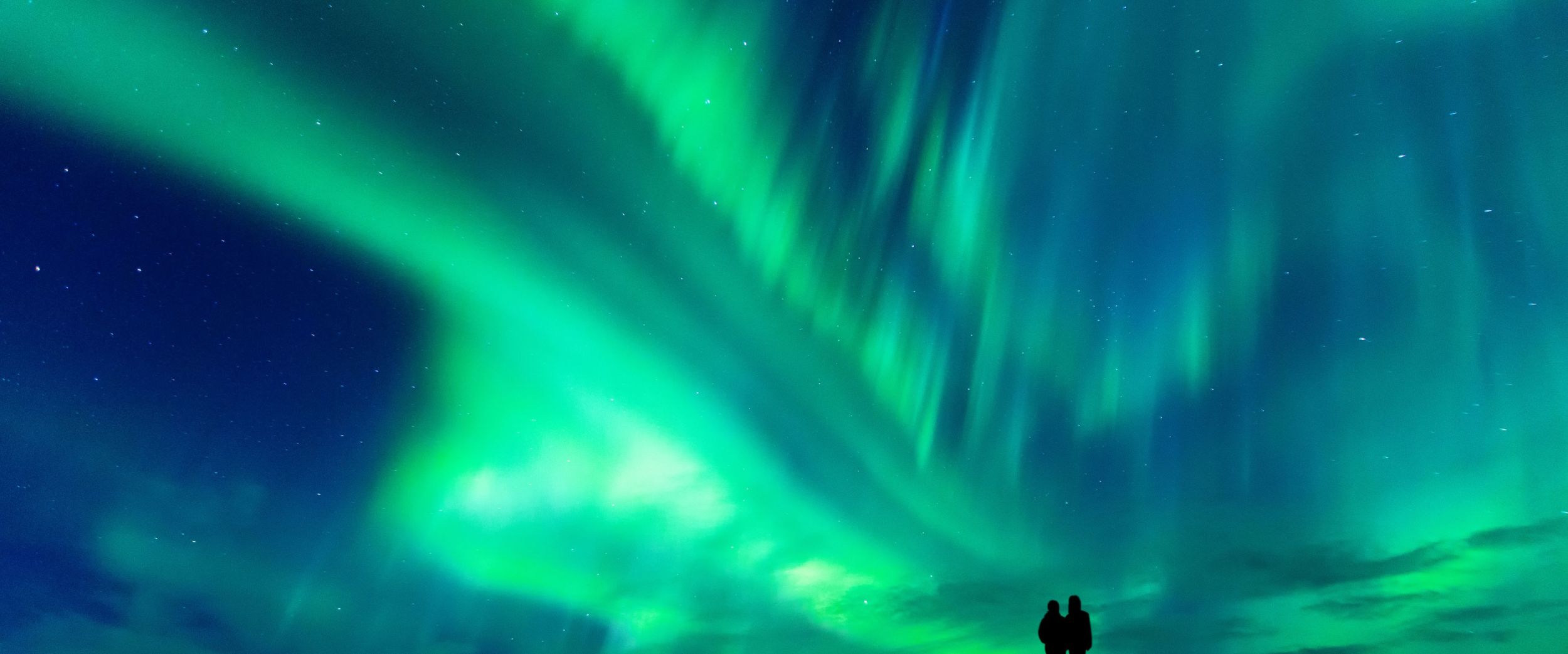
Magic and myths
Although science today has revealed many of the secrets of the Northern Lights, we still allow ourselves to be captivated by the mystery of the sky's own fireworks. And in earlier days, the Northern Lights were the basis of many myths and superstitions. The Latin name for the Northern Lights is the aurora borealis. In Greco-Roman mythology, the Aurora dawn is the sister of the sun and the moon.
The Greeks and Romans believed that the Northern Lights were Aurora as she ascended to heaven in her chariot to warn her siblings that the day had come. The Sami had their own stories about the Northern Lights. One of them was that the Northern Lights were the souls of the dead and that they should, therefore, not be talked about. In many places, people were also afraid that the Northern Lights could abduct their children. Therefore, the children had to be kept indoors when the Northern Lights were visible. That notion may have originated from legends that claimed that the Northern Lights were dead virgins who flew across the sky in search of children.
In the Bible, the prophet Ezekiel talks about a storm that came from the north, a great cloud and a blazing fire. Another story about the Northern Lights comes from Norse mythology. Odin is the father of all the gods in Norse mythology. He lived in Valhalla, a Viking "heaven". There were also Valkyries, female warriors who wore armour and carried spears and shields. The Vikings believed that the Northern Lights were the reflections of the Valkyries' armour as they crossed the sky and led new warriors to Odin and Valhalla. The oldest stories we know of are over 4,000 years old and come from China.
One story is about fire-breathing dragons in the sky. Another is about an emperor's mother who saw blazing lights in the sky before she became pregnant. Not only was an emperor born, but also the myth that children conceived under the Northern Lights become beautiful, intelligent and successful. http://site.uit.no/spaceweather/aurora-borealis/
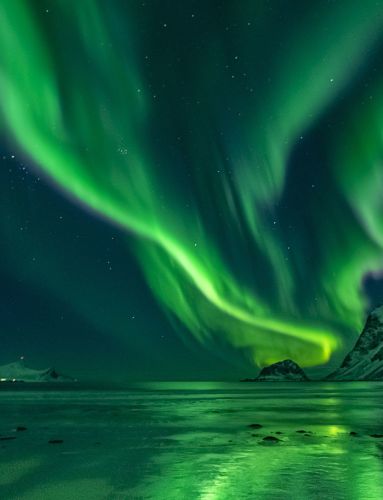
How to take a picture of the Northern Lights?
A tripod is a very helpful, and practically essential, aid if using a camera. The Northern Lights across otherwise dark skies and landscapes mean that you have little light to work with. Therefore, the photos need to be exposed over several seconds. If you do not have a tripod, place the camera on a solid surface and use the self-timer. You must also select the maximum aperture and high light sensitivity. An ISO 3200 is often recommended. If there is moonlight and also snow, you may be able to go lower, but start at 3200. A small headlamp will provide some light to work in. And of course you have to wear warm shoes and clothes. Photographing the Northern Lights can be a cold experience.
With a mobile phone, it's also about the shutter speed. Ideally, you should have a simple stand, but with new, modern phones with good stabilisers, you can get decent sharpness even with a handheld phone and a few seconds of shutter speed. If necessary, try placing the mobile phone on a solid surface. Set the phone to manual or pro, then go to shutter speed and ISO. You just have to try based on how strong the Northern Lights are and what other light sources you have in the picture.
Set the focus to "mountains", i.e. infinite, and use the self-timer button so that the phone does not move as you take the picture. If you are an inexperienced photographer, then also try automatic. It does not hurt to try. The quality of photos on modern mobile phones is often quite impressive. Whether you capture the Northern Lights on an electronic memory chip or not, you will never forget the polar fire dragon dancing across the sky during the world's most beautiful voyage.
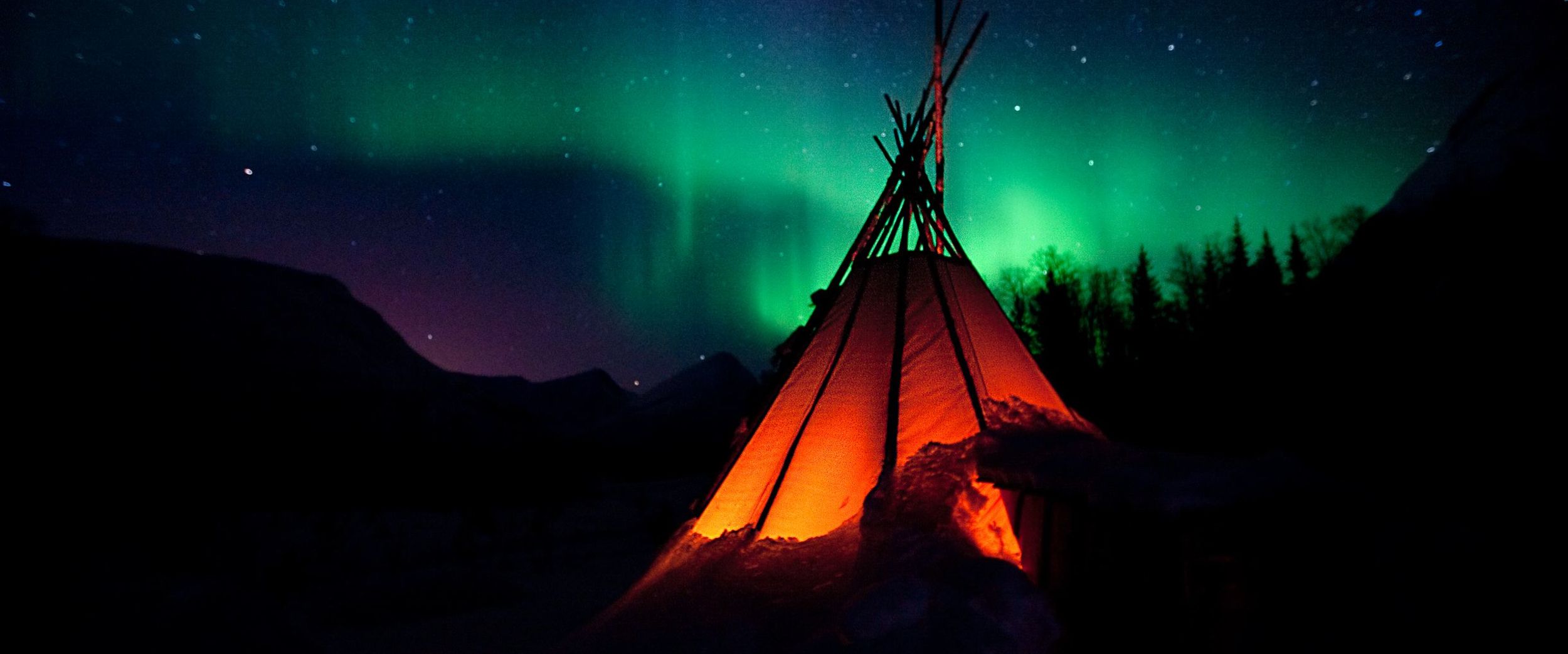
Travel to the Northern Lights
North- and southboundRound Voyage
Bergen → Kirkenes → Bergen
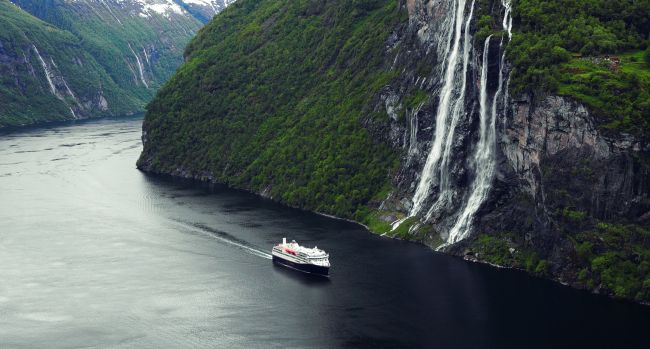
NorthboundNorthern Tip of Europe
Tromsø → Kirkenes
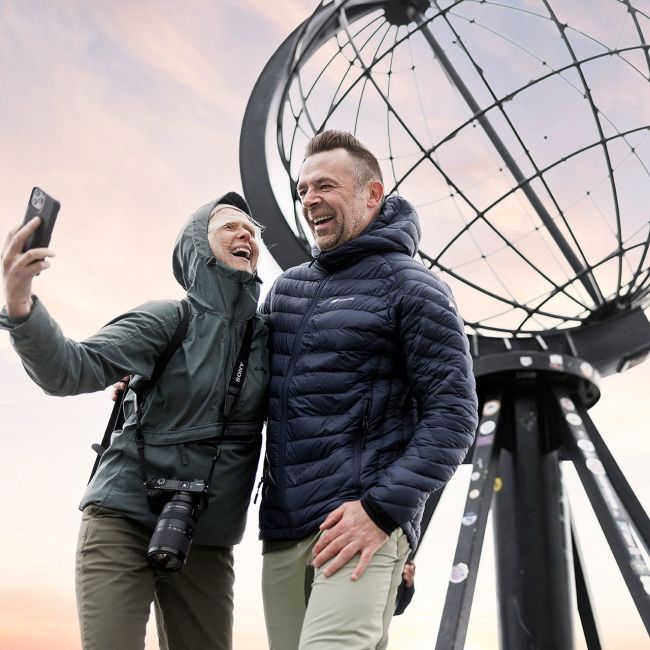
SouthboundThe Arctic Dream
Kirkenes → Tromsø
